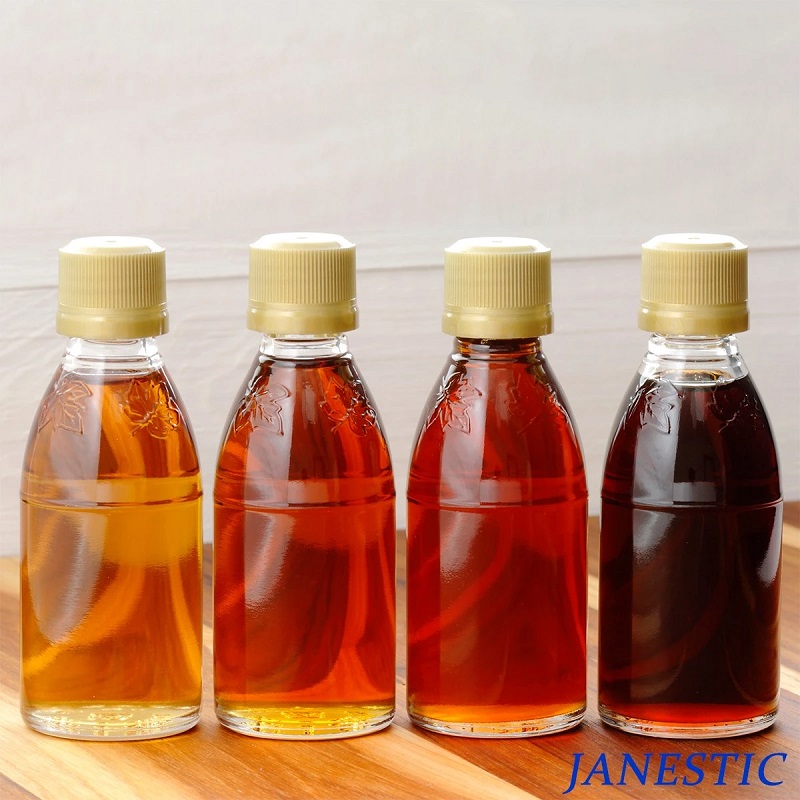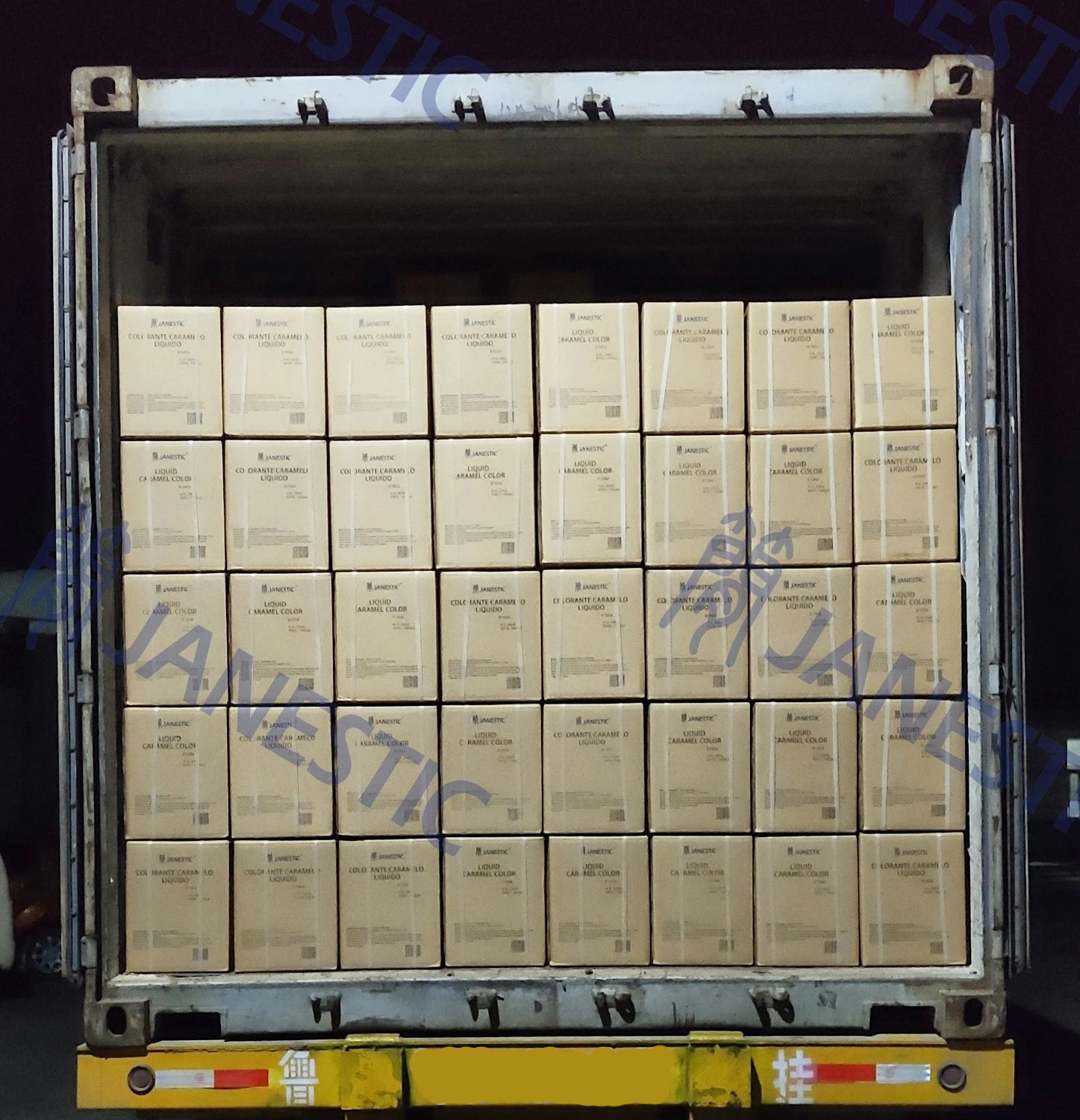










| Product NO. | JNTC01-01CL01 |
| Appearance | Dark Brown to Black Liquid |
| Baume (20ºC) | 34.0-37.0 |
| pH | 4.0-6.0 |
| Viscosity (Cps) | ≥4,000 |
| Absorbance (@610 nm) | ≥0.160 |
| Package | 20kg(2kg*10 or 10kg*2 barrels)/carton; 30kg, 270kg Plastic Drum |
| Origin | Shandong, China |
| HS Code | 1702909090 |
Liquid Caramel Color
Introduction
Specification
Physical and Chemical Properties
| ITEMS | STANDARD VALUE |
| Absorbance (@ 610 nm) | ≥0.160 |
| pH | 4.0 - 6.0 |
| Viscosity (@ 25ºC, cps) | ≥4,000 |
| Baume (°Bé 20ºC) | 34.0 - 37.0 |
| Salt Resistance (18%NaCl) | No precipitate |
Harmful Substances and Microbiological Specification
| ITEMS | STANDARD VALUE |
| Arsenic (As) ppm | ≤1.0 |
| Lead (Pb) ppm | ≤2.0 |
| Mercury (Hg) ppm | ≤0.1 |
| Cadmium (Cd) ppm | ≤1.0 |
| 4-Methylimidazole ppm | ≤200 |
| Total Nitrogen % | ≤3.3 |
| Total Sulphur % | ≤3.5 |
| Sulphur Dioxide (as SO2) % | Negative |
| Ammoniacal Nitrogen (as NH3) % | ≤0.6 |
| Coliform (cfu/mL) | <3 |
| E. Coli (cfu/mL) | <3 |
| Salmonella (/25mL) | Negative |
| Total Yeast & Mould (cfu/mL) | ≤10 |
| Total Plate Count (cfu/mL) | <200 |
List of Classification
| Classification | INS No. | EU No. | Description | Restrictions on Preparation | Used In |
| I | 150a | E150a | Plain caramel, caustic caramel, spirit caramel | No ammonium or sulfite compounds can be used | Whiskey among many |
| II | 150b | E150b | Caustic sulfite caramel | In the presence of sulfite compounds but no ammonium compounds can be used | Cognac, sherry and balsamic vinegar |
| III | 150c | E150c | Ammonia caramel, baker's caramel, confectioner's caramel, beer caramel | In the presence of ammonium compounds but no sulfite compounds can be used | Beer, sauces, and confectionery |
| IV | 150d | E150d | Sulfite ammonia caramel, acid-proof caramel, soft-drink caramel | In the presence of both sulfite and ammonium compounds | Acid environments such as soft drinks or bakery |
Characteristic & Application
Caramel color or caramel coloring is a water-soluble food coloring. It is made by heat treatment of carbohydrates, in general in the presence of acids, alkalis, or salts, in a process called caramelization. It is more fully oxidized than caramel candy, and has an odor of burnt sugar and a somewhat bitter taste. Its color ranges from pale yellow to amber to dark brown.
Caramel color is one of the oldest and most widely used food colorings, and is found in many commercially produced foods and beverages, including batters, beer, brown bread, buns, chocolate, cookies, cough drops, spirits and liquor such as brandy, rum, and whisky, chocolate-flavored confectionery and coatings, custards, decorations, fillings and toppings, potato chips, dessert mixes, doughnuts, fish and shellfish spreads, frozen desserts, fruit preserves, glucose tablets, gravy, ice cream, pickles, sauces and dressings, soft drinks (especially colas), sweets, vinegar, and more. Caramel color is widely approved for use in food globally but application and use level restrictions vary by country
Storage
Stored in tightly closed containers in a cool and dry environment, preferably not to exceed 40ºC and humidity below 60%RH. Avoid from direct light, oxygen and freezing.







Telephone/Fax:
0086 531 68657639
Address:
1-1205 4th Building of Dinghao Square, No. 44 South Industrial Road, Jinan High-Tech Zone, Shandong, China
E-mail:
Rachel Zhao rachel@janestic.cn
JANESTIC Co., Ltd ©2015-